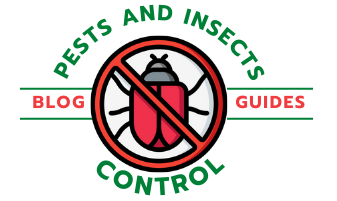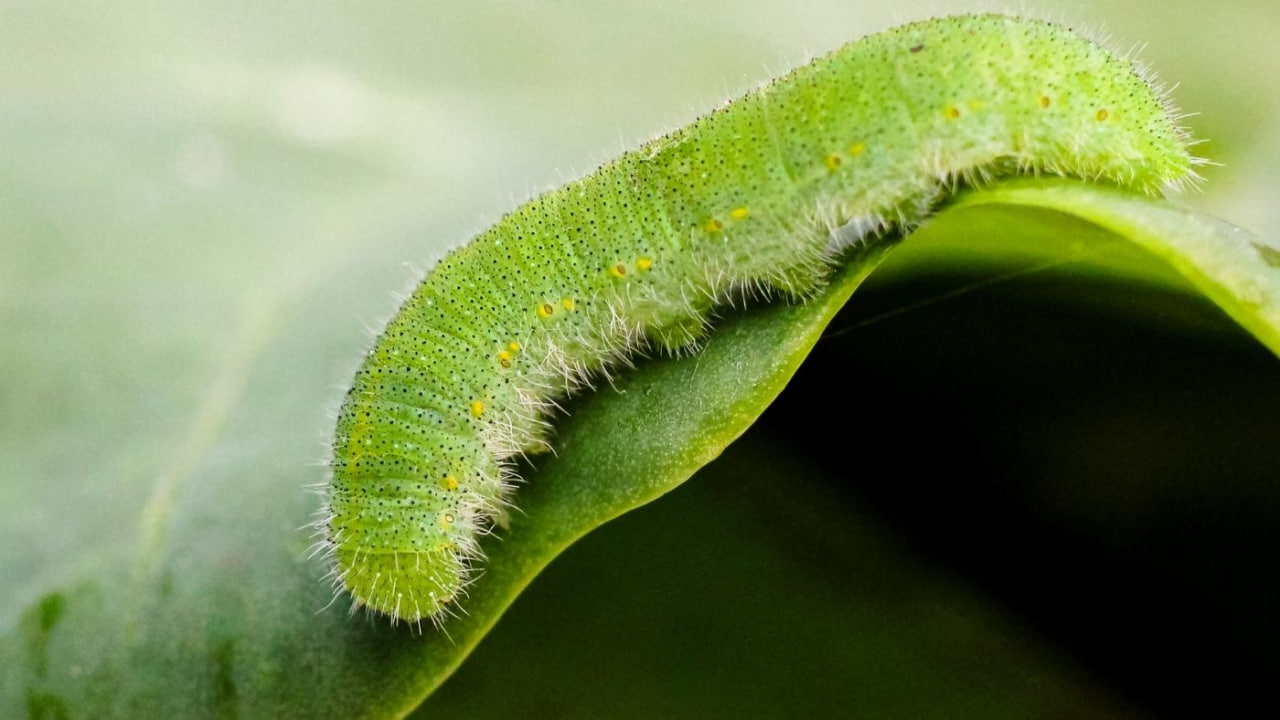Cabbage worms, which can be devastating to vegetables in the cabbage family such as broccoli, kale and cauliflower, are commonly known by many names like imported cabbage worms or ‘cabbage whites’. These pests originated in Europe and Asia but have had no problem establishing themselves throughout the United States.
While there is no one-size-fits-all solution to this problem, there are several methods that gardeners can use to prevent cabbage worms. One of the simplest ways is to spray a baking soda solution onto the leaves of plants at risk of infestation; cabbage worms baking soda disrupts the pH balance of their bodies and makes it harder for them to feed.
Another preventive measure you can take is crop rotation; growing veggies in different parts of your garden each year denies those pesky caterpillars fresh food sources.

For the gardener, one of the most destructive pests to keep an eye out for is the cabbage worm. This tiny invasive insect, which lays its eggs in or around brassica family plants, quickly hatches and begins eating away at all the surrounding plants – not just those in the same family but other flowers nearby as well.
From cabbage loopers to full-grown adults, these insects can quickly kill off entire head of cabbage before you even realize they are there.
To deal with this problem, it is important to look for signs fo conservation methods such as handpicking adult insects, spraying with an organic insecticide and using diatomaceous earth to control cabbage worms at all stages of their lives.
When you spot cabbage worms, don’t let fear take over – a few of them won’t cause major harm. However, if the infestation is more serious than expected it’s important to know how to stop their spread and protect your garden! Utilize some helpful solutions listed below for an effective way out of this situation.
Cabbage Worm Damage To Plants
Cabbageworms can damage your plants by destroying the soil of cabbages and cauliflowers. Occasionally these birds nibble at the heads of the trees and blend with the foliage. In the long run, a cabbageworm is able to feed on foliage until the stems and the arteries have disappeared. Cabbageworms are incredibly hungry, they feed frequently. They can consume whole crops, while feces can be stained or contaminated on leftover vegetables. Plant damage is not just cosmetic. Seedless tender seeds may be completely destroyed and mature plants can die from rotting in devastation.

How to Identify Cabbage Worms
The cabbage family has some unwelcome guests – pesky caterpillars, larvae and moths. From the majestic white butterfly (Pieris rapae) to the striped zebra caterpillar (Melanchra picta), these flourishers of foliage wreak havoc on cabbages everywhere! Even more notorious is their distant cousin, Plutella xylostella; otherwise known as the menacing diamondback moth.
If you spy white butterflies with delicate black spots gracefully flitting around your garden, it’s more than likely the cabbage whites – and their larvae, cabbageworms!
These cabbage plants are being visited by beautiful butterflies who, in turn, may be leaving behind a surprise for the garden: teeny-tiny eggs that will hatch into fuzzy green caterpillars with yellow markings. Not to be confused with their lookalikes – the notorious Cabbage Loopers – these charming critters can actually help bring nutrients back to your soil!
The cabbage looper, a relative of the white caterpillar, is an odd creature that traverses in unique ways; its yellow-green hue sets it apart from others and instead of walking as most do, these loopers inch along with their remarkable ‘looping’ style.
Our cabbage crops are under attack by the infamous zebra caterpillars! These black and white striped invaders can become American noctuid moths if left unchecked, so it’s important to keep an eye on them before they do too much damage.
The small, green diamondback moth caterpillar is an impressive sight to behold. Spotted with white and black dots like a tiny polka-dotted piece of artwork, this unique bug captivates the eye!
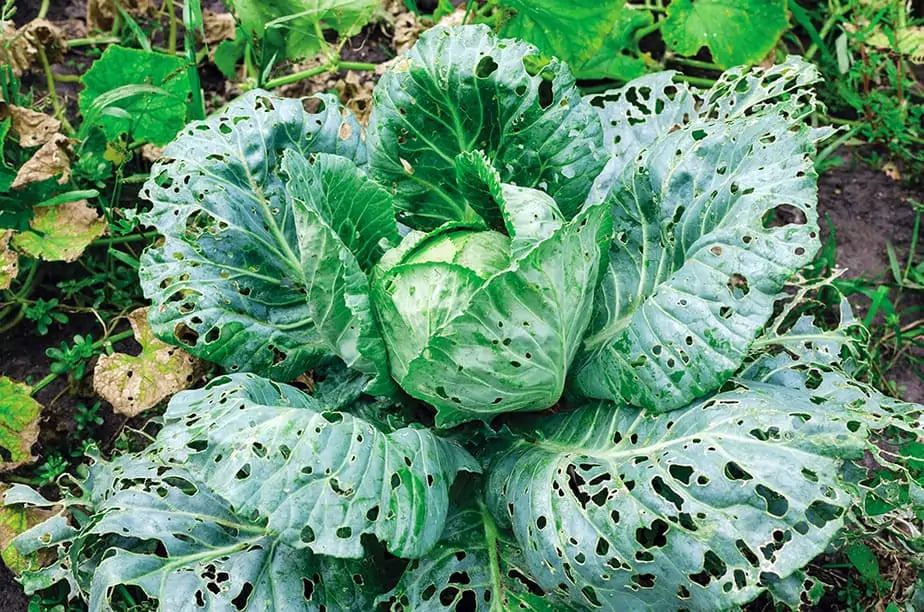
Identifying If You Have Cabbage Worms
Tiny and sneaky, cabbage worms are masters of disguise. These little critters make their homes on heads of cabbage, brussels sprouts, broccoli and mustard greens – all the while keeping a low profile with incredible camouflage capabilities! Their eggs are almost impossible to detect due to size as well.
Believe it or not, cabbage worms start out as teeny-tiny eggs laid discretely on the underside of leaves. Make sure to check these areas if you want to find any pesky little worms!
If you find small, oblong eggs, usually in shades of white or yellow and they are singly laid not grouped together, they are likely cabbage worm eggs.
These pesky odious come from the female cabbage moth that flies around laying her eggs on a cabbage head or other cabbage family plants.
Once hatched, the small greenish-colored caterpillars then feed off the leaves of your plant until it’s been devoured, leaving behind only thick stems. Keeping an eye out for the tell-tale signs of the egg can help prevent a full-on infestation, but when it does occur, be prepared to take serious measures to prevent further damage from these pint-sized pests.
If you’ve checked your cabbage heads and noticed anything more than a couple of small holes, then you may be dealing with cabbage worm damage.
These pests are typically associated with the cabbage white butterfly and can cause some serious issues for your crop if left unchecked.
The best way to identify a problem in its early stages is to look for frass, which is the insect’s fecal matter that usually looks like clusters of yellow, brown or green spots. Checking your plants regularly will help you pinpoint the issue and get rid of cabbage worms before they become an even bigger problem.
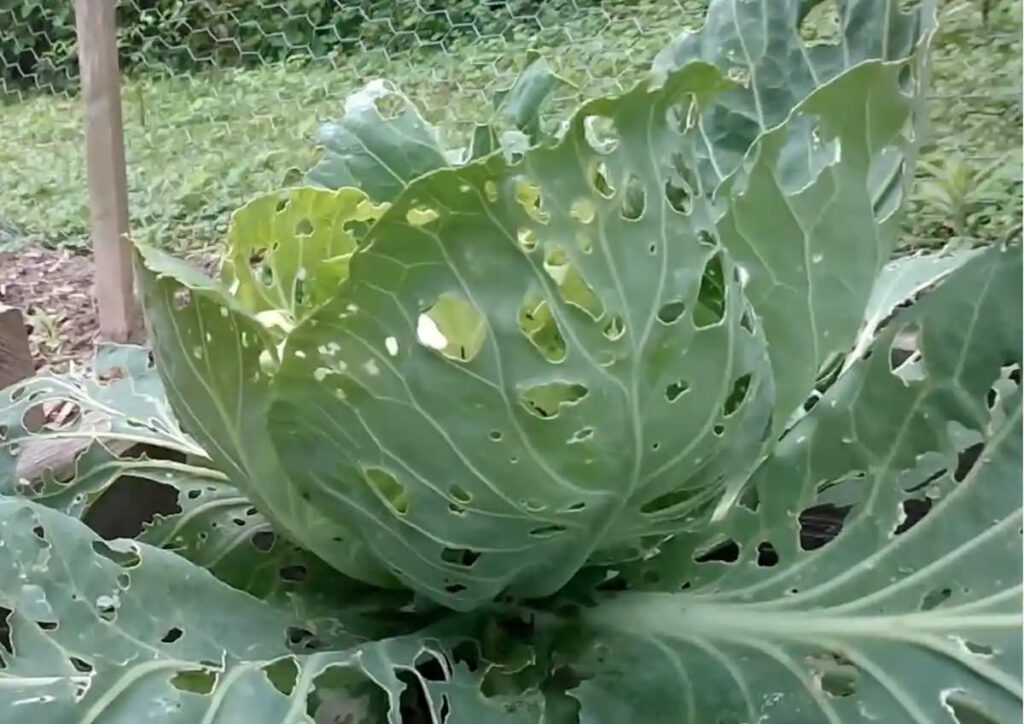
How to get rid of cabbage worms
Don’t delay – if you notice cabbage worms, their eggs or droppings in your crop field, it’s time to act! Letting these pests run rampant can spell disaster for the harvest – so don’t wait around and watch all of your hard work go up in smoke.
If you’ve seen signs of cabbage worms in your garden, don’t despair – there are a variety of organic solutions that can send those little buggers packing! Let’s explore the natural ways to protect and restore the balance of your beloved outdoor space.
Remove Cabbage Worms and Eggs By Hand
If you and your family despise those pesky six-legged creatures, there’s an engaging way to keep them at bay. Get the kids involved in a cabbage patch battle – they’ll love yanking off caterpillars from plants! And who knows? It might just be their favorite outdoor activity yet.
To tell the difference between pest eggs and beneficial ladybug eggs, look out for single whitish or yellowish oblong shaped eggs. If you find yourself faced with a cluster of similar looking ones, don’t destroy them as they could be ladybugs coming to help fight off whatever pests have been bothering your garden!
If you’ve got caterpillars invading your garden, there’s a simple solution. You can choose to do away with them without resorting to harsh chemicals – just pull the critters off and feed them as treats for your chickens!
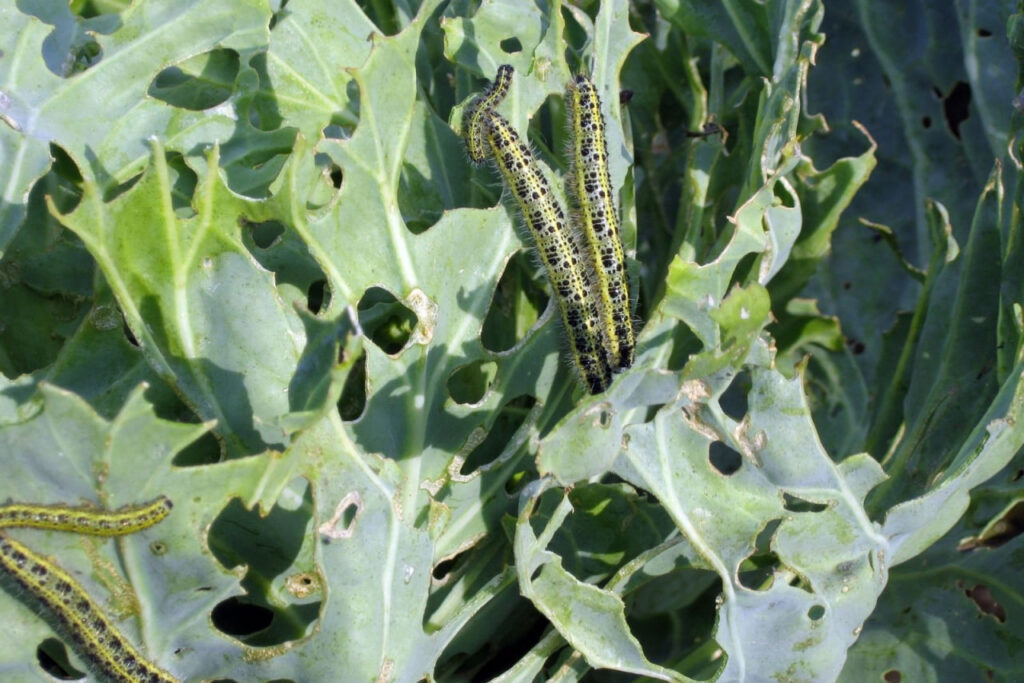
Try Cornmeal
Get rid of cabbage worms in a surprisingly easy, natural way – just sprinkle some cornmeal on your plants and let the water do its magic! The pests will eat it up, unknowingly causing their own demise as the meal causes them to swell and die.
Homemade Cabbage Worm Spray
Whip up a vinegar-water solution to blast away pests! Simply combine 1/4 cup of vinegar with 3/4 cups water and one teaspoon of soap for extra sticking power. Give your leaves an even coating, both top and bottom, without going overboard – you don’t want the mixture dripping off in clumps.
To help your plants grow healthy and strong, you can use this special spray! Just make sure the leaves aren’t drenched to avoid any issues. To be extra cautious, it’s a good idea to test the product on a small part of the plant first before you apply it all over – plus spraying at night will stop them from getting cooked in direct sunlight.
For years, I’ve used a special spray to protect my mature plants. Not only is it made with natural vinegar – an effective herbicide and weed killer – but its dilution helps keep the effects in check so that no harm comes to the foliage.
After all, why use more if you don’t have to? It’s become part of a nightly gardening routine…and one that seems just right!
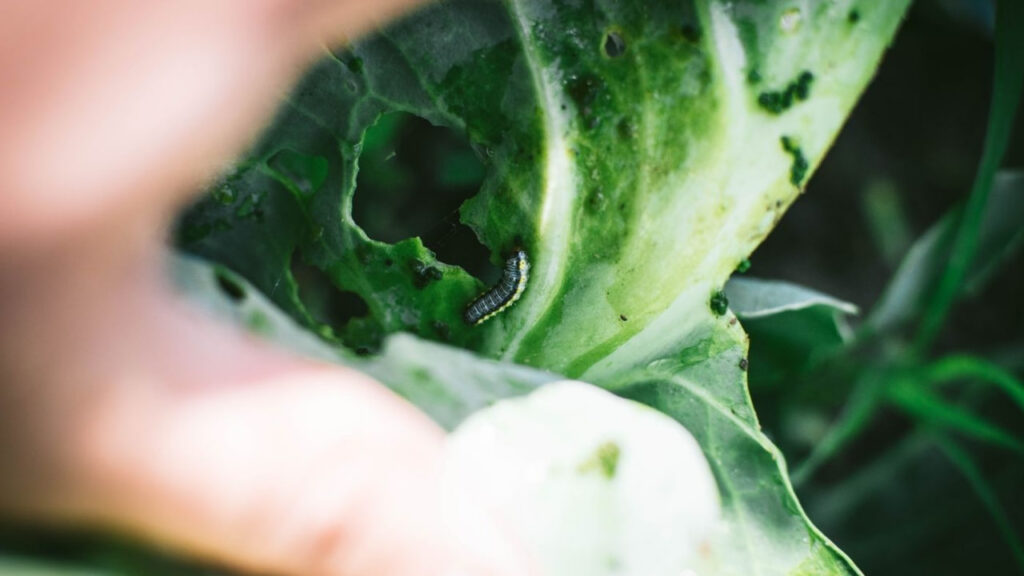
Spray With Bt
For gardeners looking for an organic way to keep pests at bay, Bacillus thuringiensis (or Bt) is a wise choice. This microbe has been part of the natural environment for centuries and used in gardening and farming as far back as we can remember – providing home growers with protection without harming beneficial critters or their plants!
Bt is an organic pesticide that, when sprayed onto your plants, can effectively get rid of cabbage worm infestations. It is considered safe for human consumption so it can be sprayed as soon as the day of harvest without worry.
The best part?
Bt is only toxic to the larvae of cabbage white butterflies and moths, making it a great way to control cabbage worms naturally without harming other beneficial insects or birds. You can spray Bt every two weeks or so to kill off any infestation you may have and with continued use, you are sure to combat cabbage worm problems in no time.

Try Spraying Plants or Worms with Neem Oil
Keep your garden free from pests with neem oil! This natural pesticide is perfect for wiping out pesky caterpillars and aphids that can wreak havoc on crops. Just a spray of the soothingly-scented oil will do the trick – allowing you to enjoy an insecticide-free harvest this season.
Neem oil may be utilized as a preventative measure to keep moths and butterflies from laying eggs in your plants. Yet, it won’t totally solve the problem – like other strategies, neem oil should really just be part of an overall strategy against these pests!

Use ducks to eat the worms
Inviting ducks into your garden has many benefits; they eat cabbage white butterflies, helping you eradicate them from consuming your precious greens.
Along with that benefit, ducks are very effective in controlling cabbage worm infestations as they will naturally feast on cabbage worms as well. Ducks’ presence alone is enough to make any garden a lively place, so invite them in and take advantage of their useful insect-fighting abilities!
Inviting nature into our own gardens is a wonderful idea, as it allows us to see firsthand the benefits of symbiosis. For example, by inviting ducks or songbirds into our garden we can help keep cabbage worms away from our cabbages, preventing their infestation.
These birds forage for food in our gardens and will naturally munch on the larvae of cabbage white butterflies before they have a chance to turn into the destructive cabbage worms. This way, nature helps to keep balance in our gardens and we get to marvel at its magnificence.
Preventing Cabbage Worms
To avoid a major headache, an ounce of prevention is always worth the effort – and that certainly holds true when it comes to keeping pesky cabbage worms away!
Taking proactive steps to prevent infestation will do more than just save you time; they can also help protect your precious plants from getting ravaged by these bothersome insects. Let’s take a look at some helpful measures for avoiding this problem before it starts.
Invite beneficial insects into your garden.
Take the battle to your garden with a host of natural predators! Encourage lady beetles, Trichogramma wasps, yellow jackets, spiders and green lacewings to take up residence – they’re ready for action against pesky cabbage worms.
Get rid of pests in your garden with natural predators! Trichogramma wasps, a friendly variety of “parasitic” wasp, are the perfect solution – tiny and harmless to humans. They lay eggs on caterpillars like tomato hornworms so you can watch nature take its course and eliminate pesky bugs from your plants.
Bring in the beautiful Cercyrmis wasps at your own risk – these little assassins can take down any caterpillar population before you know it. So if other butterflies such as monarchs are part of your garden plan, approach with caution!
Spray cabbage crops with tansy oil
Tansy oil is an effective and natural way to protect your cabbage from pesky cabbage worms. By spraying tansy oil, you can break the cycle of these unwelcome guests laying eggs on your crops – it’s a great organic solution!
Utilize Companion Planting
Gardening doesn’t have to be a battle. By strategically planting specific companion plants like marigolds, thyme and dill around your cabbages you can decrease the chances of unwelcome visitors infiltrating your garden beds.
While it’s not foolproof against those pesky butterflies, there is still hope for keeping their larvae away from your hard-earned veggies!
Controlling cabbage worms can be a tricky situation to handle. One great way to eliminate them is by planting mustard near your cabbage plants; the mustard will attract the imported cabbage worms and serve as an excellent trap.
Then, once the problem is solved, simply remove the plant and you’ll be good to go. Alternatively, you can also utilize the power of tansy – just be sure to keep it at a safe distance from your vegetables as it can spread quickly and become out of control.
Use floating row covers
Floating row covers are an effective and efficient way to protect your vegetables from yellow eggs that often cover the kale plants.
This yellow egg infestation is a sign of a cabbage moth invasion that can occur in the early spring. If a floating row cover is put into place before the yellow eggs have a chance to hatch, you may be able to repel adult cabbage butterflies away from your garden and prevent more yellow eggs from being laid.
But if you find yellow eggs already present on your kale plants, both adult butterflies and larvae may still be alive and floating row covers are still beneficial at preventing any further damage to your crops.
Row covers are a great way to protect your plants from imported cabbage worms, garden pests, and turnip greens while keeping birds away from your crops. Installing row covers over raised beds is an especially effective way of repelling cabbage moths during the summer months.
Interestingly, they can also be used for individual plants – simply drape them over a single plant and hold them down with bricks or rocks.
Rather than having to build a netting structure around the entire garden bed, these breathable covers let in natural sunlight and warm air whilst simultaneously protecting your plants from harm.
Best of all, simply tugging at them lets you easily access the garden bed when it’s time to fertilize, harvest crops or just check up on the progress of your plants!
Use Red or Purple Cabbage Varieties
Brighten up your cabbage patch with some brilliant contrasting colors – not just to ward off those pesky cabbage worms, but also for the added aesthetic. Interplanting red and purple varieties among classic green cabbages will create a kaleidoscope of vibrant hues that is both beautiful and beneficial.
Protect your plants from pesky cabbage worms with these easy to implement techniques! Use row covers for complete coverage or let nature take its course and attract natural enemies like parasitic wasps to do the dirty work.
If you don’t mind getting down in the dirt, pick them off manually – either way, keeping those cabbages safe is within reach.
Will dish soap kill cabbage worms?
The cabbage worms can be removed using water. They don’t have the chance of sailing and end up being drowned. But soap kills it quicker.
Does baking soda harm worms?
Its effectiveness kills several earthworm species. Each ounce contains an average of 1500 g sodium. It’ll cause earthworms to die and it will become useless to you as a pile of rubbish. I don’t recommend adding that soda to my bucket.
What is the best way to get rid of cabbage worms?
Spraying with Bt (Bacillusthuringiensis var.kurstaki) daily helps reduce cabbage pests. Sevin has a very good reputation. The few insects left by harvest are easily washed out with water with just enough detergent or other surfactant.
One of the greatest challenges timber growers face is dealing with imported cabbage worms. These invasive insects can decimate entire crops in just a few days, causing significant economic damage.
Fortunately, a simple and natural solution exists to eliminate and repel these pests: baking soda. Sprinkling small amounts of this everyday food item around cabbages and other vegetables helps to kill the worms directly and discourage their presence in the future.
If you want to keep your garden safe from hungry cabbage worms, there are a few methods to try. One of the most popular involves simply sprinkling baking soda on other plants in your garden, such as brussel sprouts and other listed plants, to deter the cabbage worm from entering.
Additionally, spraying soapy water onto plant leaves acts as an insecticide to help keep more stubborn bugs away.
Lastly, if you have very acidic garden soil and the other options fail to work, try topping off with rye flour.
The powdery-like consistency of rye flour will act like a barrier against the highly sensitive worms, making them avoid this particular area of the garden altogether.
Read more: What does a baby termite look like: signs
